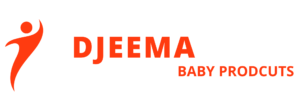
As mothers, we are constantly bombarded with information about the best way to feed our babies. We’re told “breast is best,” and countless studies back up the incredible health benefits of breastfeeding for both mothers and babies. But what happens when breastfeeding directly at the breast isn’t possible or doesn’t feel like the right choice for every family? Recently, there’s been a significant shift towards feeding expressed breastmilk, often using bottles, as a new norm. While this practice was once reserved for specific situations, it’s becoming increasingly commonplace, raising important questions about its impact on mothers, babies, families, and even societal views on women’s rights.
This article delves into fascinating research by Virginia Thorley OAM, MA, PhD, IBCLC, a leading expert in breastfeeding and infant feeding. In her paper, “The Dilemma of Breastmilk Feeding,” she explores the complexities surrounding this growing trend and encourages us to look beyond the simplified notion that as long as it’s breastmilk, the method of delivery doesn’t matter.
Before we dive into the details, let’s clarify the terms used by Thorley, as understanding these distinctions is crucial to fully grasping the nuances of this topic:
- Breastfeeding: This refers to the act of nurturing a baby directly at the breast.
- Breastmilk Feeding: This term describes the practice of feeding a baby expressed breastmilk, typically using a bottle.
- Normalization: This concept describes the process of treating an intervention as similar or equal to a natural process, often transitioning its perception from a specialized solution to an essential practice.
Understanding the Shift: From Necessity to Norm
Historically, breastmilk feeding, particularly through bottles, was considered necessary only in specific circumstances. Premature babies who lacked the strength to nurse effectively, mothers facing health challenges, or situations requiring temporary separation between mother and baby are just a few examples. However, the landscape has changed. Similar to the rise of formula feeding in the late 19th and 20th centuries, breastmilk feeding is gaining traction as a lifestyle choice rather than a last resort.
Thorley points to several factors contributing to this shift:
- Marketing Influence: Just as formula companies once aggressively promoted their products as healthy alternatives to breastfeeding, breast pump manufacturers are now marketing their devices as essential tools for every breastfeeding mother. This aggressive marketing can create a sense of need, even when it might not be medically necessary.
- The Illusion of Choice: While breastmilk feeding may seem like it offers mothers more choices and flexibility, it often leads to a hybrid approach where mothers are pressured to pump throughout the day to maintain a milk supply for bottle feeding. This can feel like a less-than-ideal compromise, leaving mothers feeling tethered to pumps and schedules.
- Societal Perceptions: The increasing prevalence of breastmilk feeding contributes to a societal normalization of this practice, making it seem like the expected choice. This can, in turn, make mothers who face challenges breastfeeding directly feel inadequate or pressured to pump even if it’s not the best fit for them.
Beyond the Milk: What Mothers and Babies May Miss
While breastmilk is undeniably the ideal food for babies, breastfeeding is about so much more than just the milk itself. It’s a complex, dynamic interaction between a mother and her baby, offering a symphony of benefits that extend far beyond simple nourishment. Here’s a closer look at what might be lost when mothers and babies primarily engage in breastmilk feeding:
- The Dance of Supply and Demand: One of the most remarkable aspects of breastfeeding is its inherent ability to regulate itself. A baby’s sucking stimulates milk production, ensuring a perfect match between supply and demand. When mothers primarily rely on pumping, this intricate dance is disrupted. Instead of relying on their baby’s cues, mothers become fixated on milliliters, potentially leading to oversupply, undersupply, or feelings of inadequacy.
- Skin-to-Skin Connection: The Power of Touch: Breastfeeding fosters an unparalleled level of skin-to-skin contact between mother and baby. This close physical contact releases oxytocin, often called the “love hormone,” in both mother and baby, promoting bonding and reducing stress. It also helps regulate a baby’s temperature, heart rate, and blood sugar levels. While mothers can certainly hold their babies close during bottle feeding, the absence of direct breastfeeding can mean a significant reduction in this crucial skin-to-skin time.
- The Impact on Maternal Well-being: Studies have shown that breastfeeding mothers experience reduced stress levels and a faster postpartum recovery. This could be attributed to the hormonal changes associated with breastfeeding, as well as the increased feelings of connection and accomplishment that often accompany this experience.
The Father Factor: Rethinking Bonding and Involvement
Often, the push for breastmilk feeding stems from a desire to involve fathers more actively in feeding. While this is an understandable and well-intentioned goal, it’s important to consider whether bottle feeding is truly the most beneficial way for fathers to bond with their babies.
Thorley argues that focusing solely on feeding as the primary means of father-infant bonding is a narrow perspective. Fathers can bond with their babies in countless meaningful ways that don’t involve a bottle, and in fact, these alternative methods might even be more beneficial:
- Skin-to-Skin with Dad: Just like mothers, fathers can experience the incredible bonding power of skin-to-skin contact. Encouraging fathers to hold their babies directly on their chests, wearing only a diaper, fosters a deep sense of connection and provides numerous physiological benefits for the baby.
- Bathing and Beyond: Everyday caregiving tasks present fantastic opportunities for fathers to bond with their little ones. Bathing, changing diapers, wearing the baby in a carrier, singing, reading, and simply spending quiet time together are all powerful ways to foster a loving connection.
The Rise of the Pump: Convenience or Complication?
Breast pumps are often marketed as essential tools for breastfeeding mothers, promising to make life easier and more convenient. While pumps certainly have their place in specific situations, their widespread adoption as a standard part of the breastfeeding journey raises some concerns:
- The Problem with “Normalizing” Pumping: When pumping becomes the norm, it can overshadow the importance of addressing underlying breastfeeding challenges. Instead of receiving support to overcome latch difficulties or milk supply concerns, mothers might be encouraged to pump as a quick fix, potentially masking deeper issues.
- The Cost of Convenience: Breast pumps can be expensive, and the ongoing costs of bottles, nipples, and storage bags add up. This financial burden can create an unnecessary barrier for some families.
- The Potential for Harm: While relatively rare, breast pumps can cause injury if not used correctly. Mothers might experience pain, nipple damage, or even mastitis. Additionally, over-reliance on pumping can decrease milk supply in the long run, particularly if not balanced with adequate breastfeeding sessions.
Working Mothers: Balancing Breastfeeding with Professional Life
Returning to work after having a baby presents a unique set of challenges for breastfeeding mothers. While pumping can seem like the only solution, Thorley argues that it shouldn’t be the only option. Instead of accepting pumping as the default solution, she advocates for broader societal changes to better support breastfeeding mothers in the workplace:
- Advocating for Change: Mothers, healthcare professionals, and employers need to work together to advocate for more breastfeeding-friendly workplaces. This includes access to private, hygienic pumping spaces, paid breaks for pumping or breastfeeding, and on-site childcare facilities.
- Flexible Work Arrangements: Exploring options such as telecommuting, flexible work schedules, or part-time work arrangements can make a significant difference for breastfeeding mothers.
- Challenging the Status Quo: We need to challenge the perception that pumping is the only way for working mothers to continue providing breastmilk for their babies.
Accurate Language, Informed Choices
Thorley makes a crucial point about the importance of using accurate language when discussing infant feeding options. Just as we’ve made progress in emphasizing that formula feeding is not equivalent to breastfeeding, we need to acknowledge that breastmilk feeding, while valuable, is not the same as breastfeeding directly at the breast.
When we clearly differentiate between these practices, we empower mothers to make truly informed choices based on accurate information. We also create space for open and honest conversations about the challenges and joys of different feeding journeys.
The Bottom Line
While breastmilk feeding plays a vital role in certain situations, it’s time to take a step back and critically examine its normalization as a standard practice. By understanding the potential downsides and advocating for more supportive environments for breastfeeding mothers, we can help families make the best choices for their individual circumstances. Ultimately, it’s about empowering mothers with accurate information, respecting their choices, and celebrating the diverse ways families nourish and bond with their babies.
Dr. Juliana Ramirez







